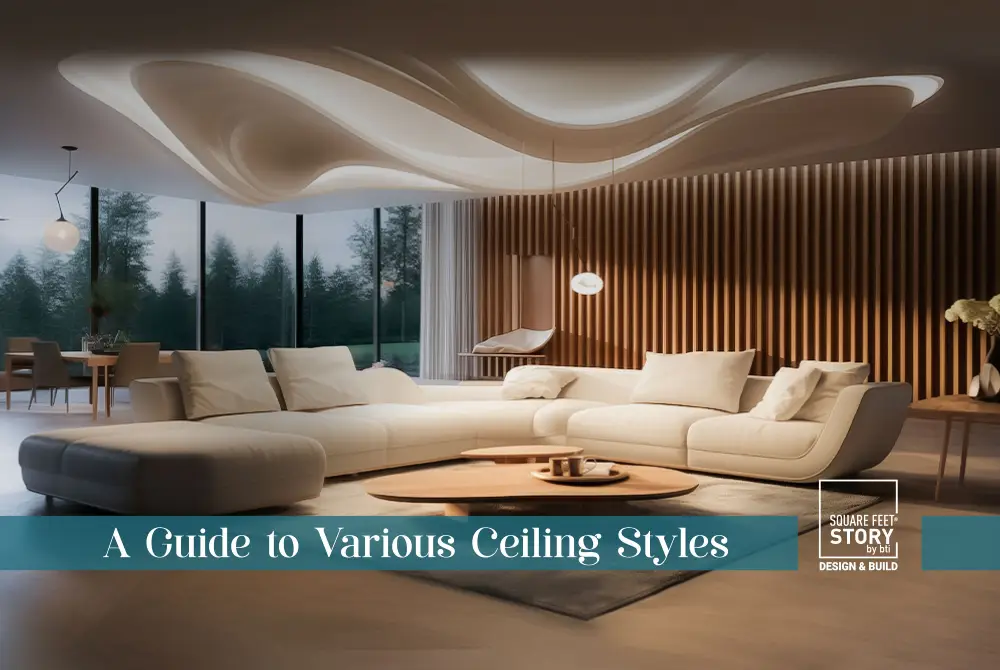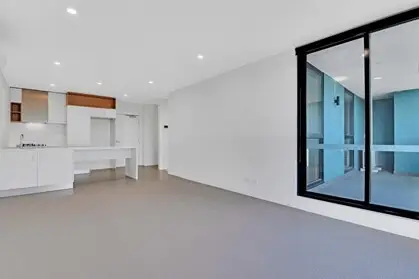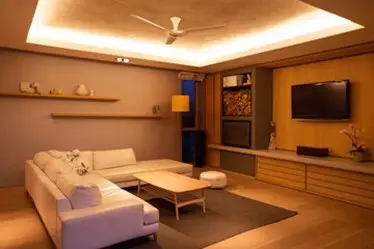
A Guide to Various Ceiling Styles
- Conventional Ceilings:

The conventional ceiling or the flat ceiling is the most commonly used style found in homes and buildings. It has a simple, straightforward design, characterized by a flat surface that extends uniformly across the entire room. While lacking in elaborate ornamentation, conventional ceilings provide a versatile backdrop for various interior design schemes.
- Coved Ceilings:

Coved ceilings, also referred to as curved ceilings, add a touch of sophistication and elegance to interior spaces. Unlike flat ceilings, coved ceilings feature a gentle curve where the wall meets the ceiling, creating a seamless transition between the two surfaces. This architectural detail lends a sense of spaciousness to rooms, while also adding to the room’s visual interest. Coved ceilings are particularly well-suited for formal living areas, dining rooms, and bedrooms, where a touch of refinement is desired. It automatically elevates the look and feel of a space, making it immediately seem more opulent.
- Beam Ceilings:

Embracing rustic charm and architectural flair, beam ceilings showcase exposed wooden beams that move across the ceiling, either horizontally or diagonally. These structural elements add visual intrigue and simultaneously evoke a sense of warmth and coziness reminiscent of traditional cottages and country homes. Beam ceilings are often featured in spaces that are looking to incorporate a rustic or farmhouse aesthetic, serving as a focal point that accentuates the room’s natural character.
- Drop Ceilings:

Practical yet stylish, drop ceilings, also known as suspended ceilings, offer a versatile solution for concealing structural components such as wiring and pipes. Constituting a grid-like framework suspended from the original ceiling, drop ceilings feature lightweight tiles or panels that rest within the grid, creating a seamless surface below. This modular design allows for easy access to utilities while providing opportunities for customization through various tile designs, colors, and textures. Drop ceilings are most commonly found in commercial spaces, offices, and basements, where functionality and aesthetic appeal come together.
- Tray Ceilings:

Exuding sophistication and architectural drama, tray ceilings feature a recessed or hollowed-out central area that is elevated above the surrounding ceiling plane, resembling an inverted tray or coffer. This multi-tiered design adds depth and dimension to rooms, creating visual interest and enhancing the perception of height. Tray ceilings lend themselves well to formal living rooms, master suites, and dining areas, where they can be further accentuated with decorative molding, ambient lighting, or contrasting paint colors to elevate the overall ambiance. They are often also used in conference or meeting halls to give a theatrical feel.
From the understated simplicity of conventional ceilings to the ornate elegance of tray ceilings, the world of interior design offers a myriad of options that can elevate the overhead space in any room. Whether you are seeking timeless sophistication or contemporary flair, each ceiling style contributes its own unique charm and personality to interior spaces. This reflects the diverse tastes and preferences of homeowners and designers alike. Therefore, the next time you find yourself gazing upward, take a moment to appreciate the beauty and versatility of the ceilings that grace our built environments.

